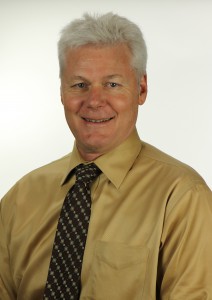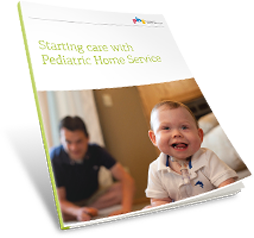Our Medical Director talks Medical Homes

Roy C. Maynard, M.D., is the Medical Director for PHS. He serves as PHS’s clinical leader, working with the team to provide consultation and advice to ensure quality and effective care to children and their families in their own homes. He also leads implementation of clinical policies, procedures and programs to further enhance the best possible care for each child. He is a Neonatologist and Pediatric Pulmonologist, and serves as a staff physician at Children’s Hospitals and Clinics in Minneapolis, Minn.
—————————————————————————————————————————-
Medical advances have allowed for increased survival of children with extreme prematurity, chromosomal abnormalities, congenital anomalies, cardiac defects, inborn errors of metabolism and neuromuscular disorders. Recent estimates suggest up to 15 percent of children have special health care needs. The more fragile or medically complex of these pediatric patients often see multiple specialists, and optimization of care can be challenging for both providers and families. Medical homes can help meet these challenges.
What is a medical home?
The medical home is not an office or a clinic, but rather an enhanced model of primary care that revolves around the patient and their family. Although all children may benefit from a medical home, the more complex the patient, the greater the potential for patient satisfaction, improve patient health and decrease costs with this concept of healthcare delivery. The cornerstones of the medical home outlined by the American Academy of Pediatrics include “health care delivery that is accessible, continuous, comprehensive, family-centered, coordinated, compassionate and culturally effective.”
How does it work?
Several principles differentiate the medical home from other care models in order to meet the medical, developmental, emotional, social and educational needs of the pediatric patient. To avoid fragmented care, the medical home uses a comprehensive care team. Generally, the team includes a designated primary doctor working with nurse practitioners, homecare nurses, occupational and physical therapists, social workers, and, ideally, a care coordinator. The care coordinator is a liaison between medical providers and other services/community resources caring for the patient. Mental-health practitioners, educators, pharmacists and medical subspecialists may also be team members.
How does a medical home promote better outcomes?
Coordinated care depends on better sharing of information and communication among the care team, patient and family. Ultimately, this shared knowledge builds trust when partnering with families in the care of their child. In the U.S., roughly 30 percent or 700 billion of the 2.5 trillion dollars spent annually on health care is estimated to be unnecessary. Comprehensive use of information technology may prevent duplication of costly tests and services. Round-the-clock access to care provided by the medical home may decrease emergency room visits, hospitalizations and costs. The latter is accomplished by establishing open scheduling or expanded hours in a physician’s/nurse practitioner’s schedule to see an acutely ill child or to increase the number of well visits, in lieu of more costly sick visits. Cost sharing, with money saved from the use of hospital-based services (emergency room and admissions), may support the payment structure of the medical home.
How can PHS help?
PHS is an ideal partner for the medical-home model for caring for medically-complex children. Accessibility to clinical staff is just a phone call away 24 hours a day. Infusion nurses, respiratory therapists, pharmacists, dietitians, a clinical social worker and home care nursing case managers attend joint clinical meetings to share information and coordinate comprehensive care for our patients. In many ways, our nurse case managers function as care coordinators and help decrease family stress. PHS is also culturally effective by using language translators on a regular basis for phone calls and the translation of education materials. Lastly, by providing an enhanced level of compassionate care in the home, PHS decreases health care costs associated with taking care of the child.
—————————————————————————————————————————-
This article can also be seen in the Summer 2013 issue of the Pulse, which Dr. Maynard writes quarterly articles for.
Originally published: October 22, 2013

